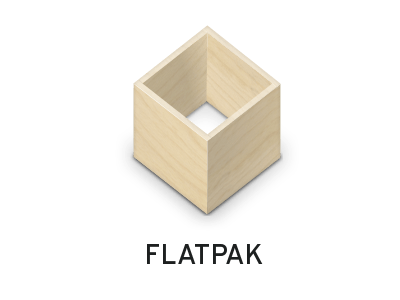How To Install Flatpak on Fedora 38

In this tutorial, we will show you how to install Flatpak on Fedora 38. For those of you who didn’t know, Flatpak is a universal package manager designed to work seamlessly across various Linux distributions. It enables users to install, update, and run software applications in an isolated environment, known as a sandbox. This sandboxed approach ensures that applications have all the necessary dependencies and libraries they need to run, without interfering with the host system.
This article assumes you have at least basic knowledge of Linux, know how to use the shell, and most importantly, you host your site on your own VPS. The installation is quite simple and assumes you are running in the root account, if not you may need to add ‘sudo‘ to the commands to get root privileges. I will show you the step-by-step installation of the HandBrake open-source video transcoder on a Fedora 38.
Prerequisites
- A server running one of the following operating systems: Fedora 38.
- It’s recommended that you use a fresh OS install to prevent any potential issues.
- SSH access to the server (or just open Terminal if you’re on a desktop).
- An active internet connection. You’ll need an internet connection to download the necessary packages and dependencies for Flatpak.
- A
non-root sudo useror access to theroot user. We recommend acting as anon-root sudo user, however, as you can harm your system if you’re not careful when acting as the root.
Install Flatpak on Fedora 38
Step 1. Before we can install Flatpak on Fedora 38, it’s important to ensure that our system is up-to-date with the latest packages. This will ensure that we have access to the latest features and bug fixes and that we can install Flatpak without any issues:
sudo dnf update
Step 2. Installing Flatpak on Fedora 38.
- Method 1: Using the Command Line
We can proceed with the installation of Flatpak. Execute the following command in the terminal:
sudo dnf install flatpak
After the installation is complete, add the Flathub repository to access a wide range of applications:
flatpak remote-add --if-not-exists flathub https://flathub.org/repo/flathub.flatpakrepo
- Method 2: Utilizing GNOME Software
Fedora 38 includes GNOME Software, a user-friendly graphical application center. Here’s how you can install Flatpak via GNOME Software:
Step 1: Launch GNOME Software from the application menu.
Step 2: Navigate to the “Software Repositories” section.
Step 3: Enable the “Flathub” repository by toggling the switch.
Step 4: Search for the desired Flatpak applications and click on the “Install” button.
- Method 3: Installing Flatpak via Flathub
Flathub is a centralized repository for Flatpak applications. You can install Flatpak and access Flathub using the following steps:
Step 1: Visit the Flathub website at https://flathub.org/ in your browser.
Step 2: Click on the “Install Flatpak” button and follow the provided instructions for your Fedora 38 system.
Step 3: Once Flatpak is installed, you can browse the Flathub website to find applications of interest. Click on the app and select the “Install” button.
Step 3. Flatpak Basic Commands.
Now that you have Flatpak installed on your Fedora 38 system, it’s essential to familiarize yourself with some basic commands:
- To search for applications available on Flathub, use the command:
flatpak search <keyword>
- To install an application, use the command:
flatpak install <application-name>
- To update an installed application, run the command:
flatpak update <application-name>
- To uninstall an application, use the command:
flatpak uninstall <application-name>
Step 4. Troubleshooting Common Issues.
While Flatpak simplifies software installation, you may encounter some issues along the way. Here are a few common problems and their solutions:
- If you experience dependency conflicts, ensure that you have the necessary repositories enabled and that your system is up to date.
- If an application fails to launch, try restarting your system or reinstalling the problematic Flatpak.
-
If you encounter issues with graphics or sound, ensure that your drivers are up to date and compatible with the installed Flatpak applications.
Congratulations! You have successfully installed Flatpak. Thanks for using this tutorial for installing Flatpak on your Fedora 38 system. For additional help or useful information, we recommend you check the official Flatpak website.